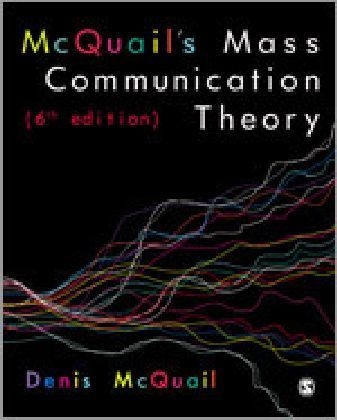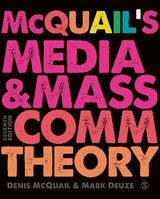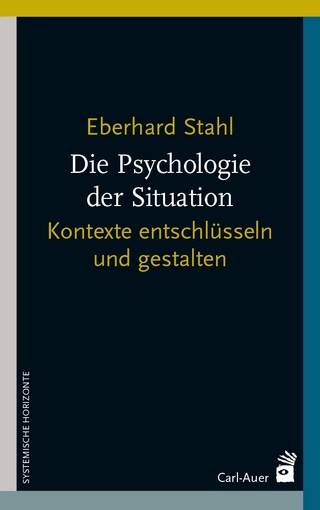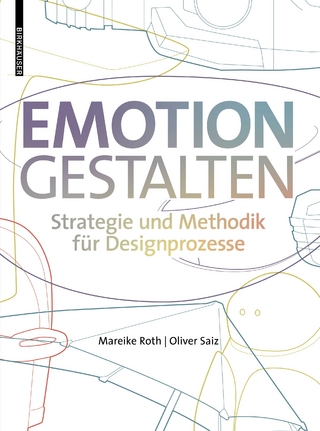
McQuail′s Mass Communication Theory
SAGE Publications Ltd (Verlag)
978-1-84920-292-3 (ISBN)
- Titel erscheint in neuer Auflage
- Artikel merken
"Denis McQuail′s Mass Communication Theory is not just a seminal text in the study of media and society - it is a benchmark for understanding and appreciating the long and winding road people and their media have taken to get us here."
- Mark Deuze, Indiana University and Leiden University
"This is a unique work tested by time and generations of students around the world - North, South, East and West."
- Kaarle Nordenstreng, University of Tampere
"McQuail′s Mass Communication Theory continues to be the clearest and best introduction to this sprawling field."
- Anders Hansen, University of Leicester
With over 125,000 copies sold, McQuail′s Mass Communication Theory has been the benchmark for studying media and communication for more than 25 years. It remains the most authoritative and comprehensive introduction to the field and offers unmatched coverage of the research literature.
It covers everything a student needs to know of the diverse forms of mass communication today, including television, radio, newspapers, film, music, the internet and other forms of new media. Denis McQuail shows that more than ever, theories of mass communication matter for the broader understanding of society and culture.
Unmatched in coverage and used across the globe, this book includes:
Explorations of new media, globalization, work, economy, governance, policy, media audiences and effects
New boxed case studies on key research publications, to familiarize students with the critical research texts in the field
Definitions, examples, and illustrations throughout to bring abstract concepts to life.
McQuail′s Mass Communication Theory is the indispensable resource no student of media and communication studies can afford to be without.
Denis McQuail (1935-2017) was Emeritus Professor at the School of Communication Research (ASCOR) University of Amsterdam and Visiting Professor in the Department of Politics at the University of Southampton. He studied history and sociology at the University of Oxford and received his Ph.D. from the University of Leeds. He is an Honorary Doctor of the University of Gent. He has published widely in the field of media and communication, with particular reference to audience research, media policy and performance, and political communication. His most recent book publication is McQuail′s Media and Mass Communication Theory, 7th edition., SAGE, 2020, co-authored by Mark Deuze.
PART ONE: PRELIMINARIES
1. Introduction to the Book
Our object of study
The structure of the book
Themes and issues in mass communication
Manner of treatment
How to use the book
Limitations of coverage and perspective
Different kinds of theory
Communication science and the study of mass communication
Alternative traditions of analysis: structural, behavioural and cultural
Conclusion
2. The Rise of Mass Media
From the beginning to mass media
Print media: the book
Print media: the newspaper
Other print media
Film as a mass medium
Broadcasting
Recorded music
The communications revolution: new media versus old
Differences between media
Conclusion
PART TWO: THEORIES
3. Concepts and Models for Mass Communication
Early perspectives on media and society
The ‘mass’ concept
The mass communication process
The mass audience
The mass media as an institution of society
Mass culture and popular culture
The rise of a dominant paradigm for theory and research
An alternative, critical paradigm
Four models of communication
Conclusion
4. Theory of Media and Society
Media, society and culture: connections and conflicts
Mass communication as a society-wide process: the mediation of social relations and experience
A frame of reference for connecting media with society
Theme I: power and inequality
Theme II: social integration and identity
Theme III: social change and development
Theme IV: space and time
Media–society theory I: the mass society
Media–society theory II: Marxism and political economy
Media–society theory III: functionalism
Media–society theory IV: social constructionism
Media–society theory V: communication technology determinism
Media–society theory VI: the information society
Conclusion
5. Mass Communication and Culture
Communication and culture
The beginnings: the Frankfurt School and critical cultural theory
The redemption of the popular
Gender and the mass media
Commercialization
Communication technology and culture
Mass media and postmodern culture
Conclusion
6. New Media - New Theory?
New media and mass communication
What is new about the new media?
The main themes of new media theory
Applying medium theory to the new media
New patterns of information traffic
Computer-mediated community formation
Political participation, new media and democracy
Technologies of freedom?
New equalizer or divider?
Conclusion
7. Normative Theory of Media and Society
Sources of normative obligation
The media and the public interest
Main issues for social theory of the media
Early approaches to theory: the press as ‘fourth estate’
The 1947 Commission on Freedom of the Press and the social theory of responsibility
Professionalism and media ethics
Four Theories of the Press and beyond
The public service broadcasting alternative
Mass media, civil society and the public sphere
Response to the discontents of the public sphere
Alternative visions
Normative media theory: four models
Conclusion
PART THREE: STRUCTURES
8. Media Structure and Performance: Principles and Accountability
Media freedom as a principle
Media equality as a principle
Media diversity as a principle
Truth and information quality
Social order and solidarity
Cultural order
The meaning of accountability
Two alternative models of accountability
Lines and relations of accountability
Frames of accountability
Conclusion
9. Media Economics and Governance
Media ‘not just any other business’
The basics of media structure and levels of analysis
Some economic principles of media structure
Ownership and control
Competition and concentration
Mass media governance
The regulation of mass media: alternative models
Media policy paradigm shifts
Media systems and political systems
Conclusion
10. Global Mass Communication
Origins of globalization
Driving forces: technology and money
Global media structure
Multinational media ownership and control
Varieties of global mass media
International media dependency
Cultural imperialism and beyond
The media transnationalization process
International news flow
The global trade in media culture
Towards a global media culture?
Global media governance
Conclusion
PART FOUR: ORGANIZATIONS
11. The Media Organization: Pressures and Demands
Research methods and perspectives
The main issues
Levels of analysis
The media organization in a field of social forces
Relations with society
Relations with pressure and interest groups
Relations with owners and clients
Relations with the audience
Aspects of internal structure and dynamics
The influence of personal characteristics of mass communicators
Role conflicts and dilemmas
Conclusion
12. The Production of Media Culture
Media-organizational activities: gatekeeping and selection
Influences on news selection
The struggle over access between media and society
The influence of sources on news
Media-organizational activity: processing and presentation
The logic of media culture
Alternative models of decision-making
The coming of convergence culture: consumers as producers
Conclusion
PART FIVE: CONTENT
13. Media Content: Issues, Concepts and Methods of Analysis
Why study media content?
Critical perspectives on content
Structuralism and semiology
Media content as information
Media performance discourse
Objectivity and its measurement
Questions of research method
Traditional content analysis
Quantitative and qualitative analysis compared
Conclusion
14. Media Genres and Texts
Questions of genre
Genre and the internet
The news genre
The structure of news: bias and framing
News as narrative
Television violence
The cultural text and its meanings
Conclusion
PART SIX: AUDIENCES
15. Audience Theory and Research Traditions
The audience concept
The original audience
From mass to market
Goals of audience research
Alternative traditions of research
Audience issues of public concern
Types of audience
The audience as a group or public
The gratifi cation set as audience
The medium audience
Audience as defi ned by channel or content
Questions of audience reach
Activity and selectivity
Conclusion
16. Audience Formation and Experience
The ‘why’ of media use
A structural approach to audience formation
The uses and gratifi cations approach
An integrated model of audience choice
Public and private spheres of media use
Subculture and audience
Lifestyle
Gendered audiences
Sociability and uses of the media
Normative framing of media use
Audience norms for content
The view from the audience
Media fandom
The end of the audience?
The ‘escape’ of the audience
The future of the audience
The audience concept again
Conclusion
PART SEVEN: EFFECTS
17. Processes and Models of Media Effects
The premise of media effect
The natural history of media effect research and theory: four phases
Types of communicative power
Levels and kinds of effects
Processes of media effect: a typology
Individual response and reaction: the stimulus–response model
Mediating conditions of effect
Source–receiver relations and effect
The campaign
Conclusion
18. Social-Cultural Effects
A model of behavioural effect
The media, violence and crime
Media, children and young people
Collective reaction effects
Diffusion of innovation and development
The social distribution of knowledge
Social learning theory
Socialization
Social control and consciousness formation
Cultivation
Media and long-term social and cultural change
Entertainment effects
Conclusion
19. News, Public Opinion and Political Communication
Learning from news
News diffusion
Framing effects
Agenda-setting
Effects on public opinion and attitudes
The elaboration-likelihood model of infl uence
The spiral of silence: the formation of climates of opinion
Structuring reality and unwitting bias
The communication of risk
Political communication effects in democracies
Effects on the political institution and process
Media influence on event outcomes
Propaganda and war
Internet news effects
Conclusion
EPILOGUE
20. The Future of Mass Communication
Origins of the mass communication idea
The end of mass communication?
The survival of mass communication
The consequences of new media for mass communication
Conclusion
| Erscheint lt. Verlag | 18.2.2010 |
|---|---|
| Verlagsort | London |
| Sprache | englisch |
| Maße | 186 x 232 mm |
| Gewicht | 1130 g |
| Themenwelt | Sozialwissenschaften ► Kommunikation / Medien ► Kommunikationswissenschaft |
| Sozialwissenschaften ► Kommunikation / Medien ► Medienwissenschaft | |
| ISBN-10 | 1-84920-292-3 / 1849202923 |
| ISBN-13 | 978-1-84920-292-3 / 9781849202923 |
| Zustand | Neuware |
| Haben Sie eine Frage zum Produkt? |
aus dem Bereich



